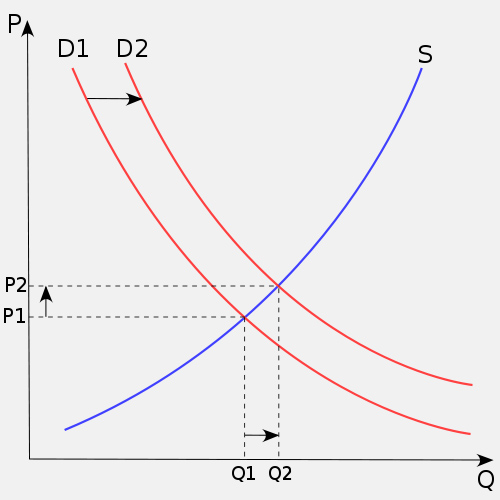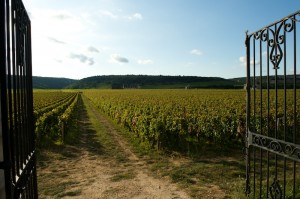 Guess what? We’re not the only ones who think Burgundies are fabulous. To quote Michael Jackson, “you are not alone.”
Guess what? We’re not the only ones who think Burgundies are fabulous. To quote Michael Jackson, “you are not alone.”
It all comes down to the simple law of supply and demand. For good Burgundies, there is generally more demand than supply. French people like their wine, so there’s less to export to the non-Frenchies. Not everybody lives in Burgundy or is fortunate enough to have family to “visit” there, like me (muhahaha). By the time things are shipped out, we’re left with a smaller pool to choose from. Throw in the tariffs and shipping, and Burgundies can be pretty pricey. So, how do you get the best bang for your money?
I collected data from 5 highly regarded books on Burgundy, 8 websites where you can actually purchase wine from, 3 well respected wine tasting sites, my own experiences as well as those from some of my peers – whew… I then loaded it all into one massive spreadsheet. Voila… the beginnings of an optimization analysis. (I know, I am a complete freak show, but I can’t help it. It’s ingrained in me after all of those years in Investment Banking). You get to benefit from the fruits of my labor. Looking exclusively at wines that are either 100% Pinot Noir or 100% Chardonnay from the Côte d’Or, here are the questions I asked and then cross-referenced to produce the output below:
- Who are some of the top producers – Maisons (grower and negociant) and then Domaines?
- What terroirs allow me to find value?
- Can I actually find these wines at a liquor store by my house?
- Is the price of these wines between $20-40?
Drum roll please….
Top Producers:
Size Matters: Economies of scale… Take a look at a map of the Côte d’Or wine region. Now look at the following Maisons:
- Maison Louis Jadot: Founded in 1859 with roots in the vineyards of Beaune dating back to 1826, this Maison is now owned by their previous US importer, the Rudy Kopf family. Their vineyards are scattered across 154 hectares (380.5 acres) in the Côte d’Or, Måconnais and Beaujolais.
- Maison Bouchard Père et Fils: Their colorful history dates back to 1731. They are now owned by Henriot. With 129 hectares (321 acres) of vineyards (33 acres of Grands Crus and 183 acres of Premiers Crus), Bouchard is massive. I wrote an in depth article on Bouchard. To further illustrate my point above about the Frenchies keeping the goods for themselves, someone like Bouchard exports only 52% of their production. Bouchard produces between 3-3.5 million bottles per year. Um hello… that’s a little over 1.5 million bottles just for the Frenchies!
- Maison Joseph Drouhin:In 1880, Joseph Drouhin founded his own wine company. Today, this domaine is comprised of 73 hectares (182.5 acres) of vineyards in Côte de Nuits, Côte de Beaune, Côte Chalonnaise and Chablis. The majority of these vineyards are classified as Premiers and Grands Crus. I originally met some of the family members on a trip to their vineyard in Oregon, Domaine Drouhin. They are the absolute loveliest people. I was able to catch up with Véronique Drouhin-Boss who is in charge of wine making at both Maison Joseph Drouhin and Domaine Drouhin while she was in New York yesterday and hope to follow-up with an article on their wine making philosophy in the near future. (If you trek out to the Willamette Valley, their Vineyard was one of my favorite ones.)
That’s 202 hectares (884 acres)! A Maison acts in both the negociant and grower capacity, so it makes wine from grapes grown on premises as well as grapes of other growers. They have it all… region (for example, Bourgogne Blanc, Bourgogne Rouge), district (for example, Côte de Beaune Villages, Côte de Nuits-Villages), commune (for example, Saint-Aubin, Marsannay) and single vineyard (for example, Les Ruchots). (Here is an overview of the classification system of Burgundy:). If the wines are made from their own grapes, it is noted on the label as Domaine. You can find some really nice values at the region, district and commune levels of wines for each one of these maisons. They have their footprint in almost every commune. Do the math on that. We all know that there are economies of scale here as production, shipping and marketing costs are all kept down. You benefit and you can actually find these wines in many locations.
Own it: Do what you do and do it well. Some winemakers have a foothold in one or two communes. They know their family’s terroir like nobody’s business. Instead of hearing “Good Night Moon” or “Dr. Seuss” when they were 5 years of age, they were probably hearing bedtime stories about the terroir from their grandparents. Take advantage of that. Here are the communes and smaller producers where I found quality and availability (so decent volume and aggressive importers) within our set price parameters. Use these communes as guidance for the 3 maisons I mentioned above.
REDS
(north to south)
- Marsannay-la-Côte (Marsannay): This commune has no Grands Crus or Premiers Crus, but it’s relatively easy to get a tasty Marsannay for anywhere from $20-35. Typically, expect black fruits and possibly some licorice. Sometimes, these wines can be a little fruity and lighter in weight. Here are some domaines of note: Domaines Joseph Roty, Jean & Jean-Louis Trapet and Bruno Clair.
- Morey-Saint-Denis: This region is nestled in between Chambolle-Musigny and Gevrey-Chambertin. (Here’s an in depth look at Morey-Saint-Denis.) It’s tough having super famous neighbors, so some of the Premiers Crus (single vineyard) offer a value proposition. You’re going to have to search, but search you must. You can find some of these for under $40. Check out Domaines Hubert Lignier, Frederic Magnien, Pierre Amiot, Arlaud, Fourrier and Heresztyn.
- Savigny-lès-Beaune: Roughly 85% of what they produce is red. There are no Grands Crus, BUT there are 22 Premiers Crus and many within a $23-45 price range. It’s relatively easy to find these with a $30 handle. LOOK for them. Expect to taste red fruits, mocha and/or coffee and possibly some dusty tannins. Domaines Joseph Roty, Bruno Clair and Lignier Michelet and Maison Nicolas Potel are names to track down for value and quality.
- Santenay: Located at the base of Côte de Beaune, but one of the larger communes, Santenay is known for light bodied reds, many which can be found for between $16-40. Typically, their wines are considered to be rustic, gamey, possibly with some smoke on the palate. Look for the following producers: Domaines Joseph Roty, de la Pousse d’Or, Louis Latour and Vincent Girardin; Maisons Joseph Drouhin and Nicolas Potel.
- Bonus Round: Here are a few other value propositions to look for in the Côte d’Or — Chorey-lès-Beaune, Ladoix, Nuits-Saint-Georges (loads of inexpensive 1er Crus here) and Monthelie. I know I said I would focus on wines from the Côte d’Or this time around, but I can’t help but add Givry from Côte Chalonnaise to this list.
SIDEBAR: 1er cru vs. Premier Cru – When grapes from two or more Premiers Crus vineyards are blended, the label will will not state the specific Premiers Crus vineyards the grapes came from AND “1er Cru” will appear on the label in lieu of “Premier Cru.”
WHITES
(north to south)
- Saint-Aubin: Nestled right by illustrious Meursault, Puligny-Montrachet and Montrachet, this commune offers outstanding values, with decent wines for $14-36. Roughly 2/3 of their production is Pinot Noir, but I really enjoy their whites. One of the wine makers I met in Burgundy jokingly referred to Saint-Aubin as the “poor man’s Montrachet” (P.S. not derogatory in any regard as this wine maker ‘fessed up to Saint-Aubin being his daily, go-to wine). It’s fairly easy to track one down for $35. Expect citrus, white flowers, stone/flint and austerity on the palate. Look for Domaines Pierre-Yves Colin-Morey, Jean Marc Morey, Jean Chartron, Jean Rijckaert and Philippe Colin.
- Chassagne-Montrachet: Right next to Saint-Aubin, but slightly southeast, Chassagne shares Le Montrachet and Båtard Montrachet with Puligny-Montrachet. Look for the Villages and Premiers Crus. You can find some for around $30. Expect floral tones, intermingling citrus, light yeasty notes and minerality. These wines tend to be more rich, rounded and succulent for the entry level. Search for Domaines Faiveley, Jean Marc Morey, Frederic Magnien, Bernard Morey, Chåteau de la Maltroye, Colin Deleger and Jean-Noel Gagnard.
- Beaune: There’s lots of Pinot here and 3/4 are Premiers Crus, but there are some lovely whites. Be certain to look for Maisons Louis Jadot and Bouchard and Domaines Jean Marc Boillot and Chanson.
- Bonus Round: Within the Côte d’Or, also check out Saint-Romain. Even though I am focusing on the Côte d’Or for this piece, I couldn’t help but include a few others, which are also in Burgundy. From Côte Chalonnaise – Rully, Montagny. From Måconnais – Måcon (and Villages – Comte Lafond makes a Macon Milly Larmantine that rivals any 1er Crus Puligny under $100; these sell for about $25-ish. And In between Måconnais and Beaujolais – Saint-Véran
ROSÉS
Source: Supply and Demand curve, Wikipedia. Used under the terms of their Creative Commons License.
